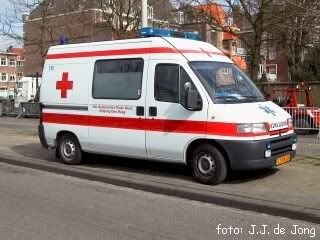Nonconvulsive Seizures in Electroconvulsive Therapy.
Further Evidence of Differential Neurophysiological Aspects of Bitemporal Versus Bifrontal Electrode Placement.
Early studies of electrode placement in electroconvulsive therapy (ECT) practice focused on bitemporal and unilateral placements. In 1968, Inglis proposed a method for reducing both verbal and nonverbal memory impairment by sparing electrical stimulation to either temporal lobe. According to Inglis, this could be accomplished by placing the electrodes anteriorly over the forehead, which subsequently has been termed "bifrontal" electrode placement. The theory behind bifrontal electrode placement is that if the electrical stimulation is concentrated over the prefrontal lobes, then the temporal lobes are spared, thus avoiding the dysmnesic effects that stimulation over the temporal lobes causes with unilateral or bitemporal placements. Some clinical evidence supports the hypothesis that bifrontal electrode placement may be therapeutically effective and that it causes less memory disruption than other electrode placements.
Evidence for differential neurophysiological aspects of electrode placements was provided by Nobler et al, who found that unilateral placement resulted in cortical blood flow changes predominantly in the stimulated hemisphere, whereas bitemporal placement caused blood flow changes bihemispherically. In addition, there was an anteroposterior gradient in the blood flow changes such that more prominent reduction in frontal vis-à-vis posterior cortical areas was highly correlated with clinical efficacy. Further studies were conducted at Yale with single photon emission computed tomography, in which bitemporal ECT was associated with ictal blood flow increases in both frontal as well as temporal lobes, right unilateral placement was associated with ictal increases in the right hemisphere only, and bifrontal placement was associated with focal increases bilaterally in the prefrontal lobes, but not temporal lobes. This latter finding would mesh nicely with the theory that bifrontal electrode placement causes less memory impairment via less involvement of the temporal lobes, which subserve memory processes.
In ECT practice, typically motor as well as electroencephalographic (EEG) evidence of seizure activity is appreciated during the treatment, especially if the cuff method is used to isolate a limb from the paralyzing effects of neuromuscular blockade. Occasionally, however, clear evidence of EEG seizure activity is seen during ECT treatment in the absence of motor activity, a phenomenon termed "nonconvulsive" seizures. Presumably, this represents focal prefrontal ictal involvement because that is where EEG electrodes are typically placed. In our practice, we have been using bifrontal electrode placement with some regularity in recent years, and we have noticed a markedly higher incidence of nonconvulsive seizures with this electrode placement than with bitemporal placement. We describe our data herein.
DISCUSSION
There is increasing interest in bifrontal electrode placement as a method to reduce cognitive impairment in ECT. In addition, as cited above, there is some neurophysiological evidence from cerebral blood flow studies of differences between right unilateral and bitemporal placement, as well as between bifrontal placement vis-à-vis the others.
We have documented that bifrontal electrode placement is associated with a much higher chance of eliciting a nonconvulsive or focal prefrontal seizure in ECT practice. We feel that this represents more evidence that there are important neurophysiological differences between bifrontally and bitemporally induced seizures. Studies of intracerebral electrical current density in ECT, which include direct measurements as well as computer modeling, support the theory that, by concentrating the electrical current over the prefrontal cortex, a seizure may be initiated in that region. By inference, one may speculate that a seizure thus induced would have a greater chance of being nonconvulsive than a seizure induced by electrical stimulation directly over the motor cortex, as is done in unilateral ECT. Boylan et al found that approximately 7.4% of bitemporally treated patients had a nonconvulsive seizure, which is in close agreement with our reported rate of 10% for that placement. In the Boylan et al study, it was postulated that right unilateral electrode placement, by virtue of electrical current density focused over the motor cortex, is more likely to stimulate motor cortical seizure activity than bitemporal electrode placement. Their data supported this hypothesis, and we feel that our finding of even higher rates of nonconvulsive seizures in bifrontal electrode placement provides more supportive evidence.
There are several limitations to our study. Most prominently, among these is the retrospective design with its attendant lack of randomization. Some possible confounding variables not accounted for in our analysis include concomitant medications patients were taking, subtle differences in cuff technique among the various practitioners in our group, and the effects of previous ECT courses. Furthermore, there was a trend for a differential sex distribution between the 2 placements. However, we do not feel that any of these factors would be strong enough to account for a 3-fold difference in the incidence of nonconvulsive seizures.
From a clinical standpoint, one must determine a stimulus dosing strategy to use should a nonconvulsive seizure occur in ECT. One may speculate that if frontal lobe activity is central to ECT mechanisms, then nonconvulsive seizures may be conceptualized as possibly fully therapeutic with perhaps less memory impairment. On the other hand, such seizures in ECT practice are rare and may be considered aberrant, thus necessitating an increase in the electrical dose at the next treatment session. We have found that this latter strategy invariably results in a seizure with motor activity. In addition, there are case reports of nonconvulsive status epilepticus in ECT. If bifrontal electrode placement is associated with a higher chance of nonconvulsive seizures, then clinicians using this electrode placement should be especially vigilant for the presence of this rare complication. The ECT field awaits further evidence of the comparative cognitive profiles and clinical efficacy of bifrontal placement.




0 Comments:
Post a Comment
<< Home